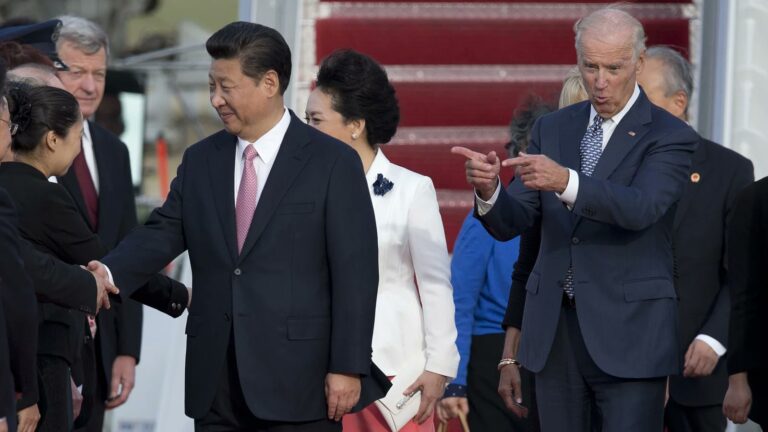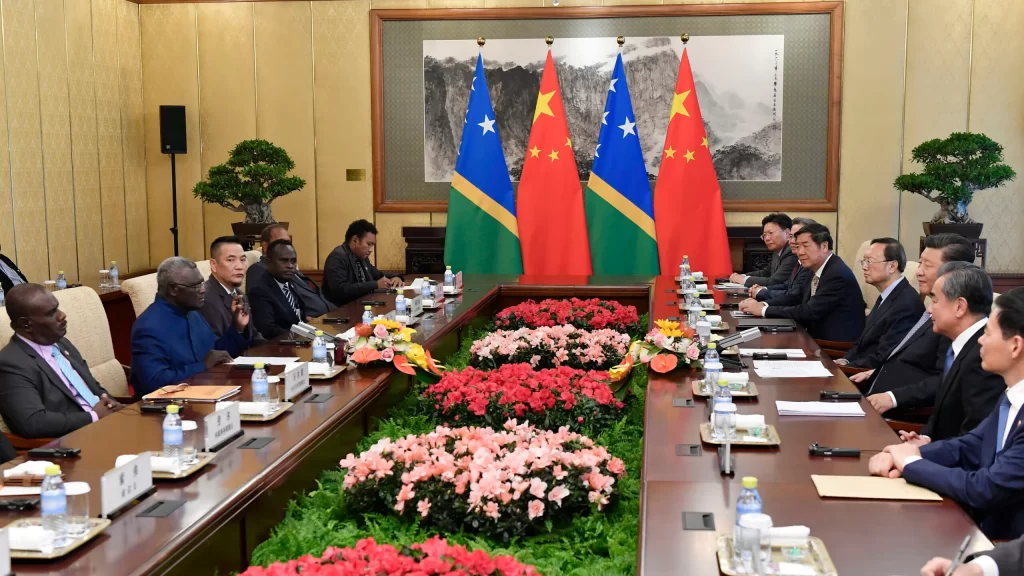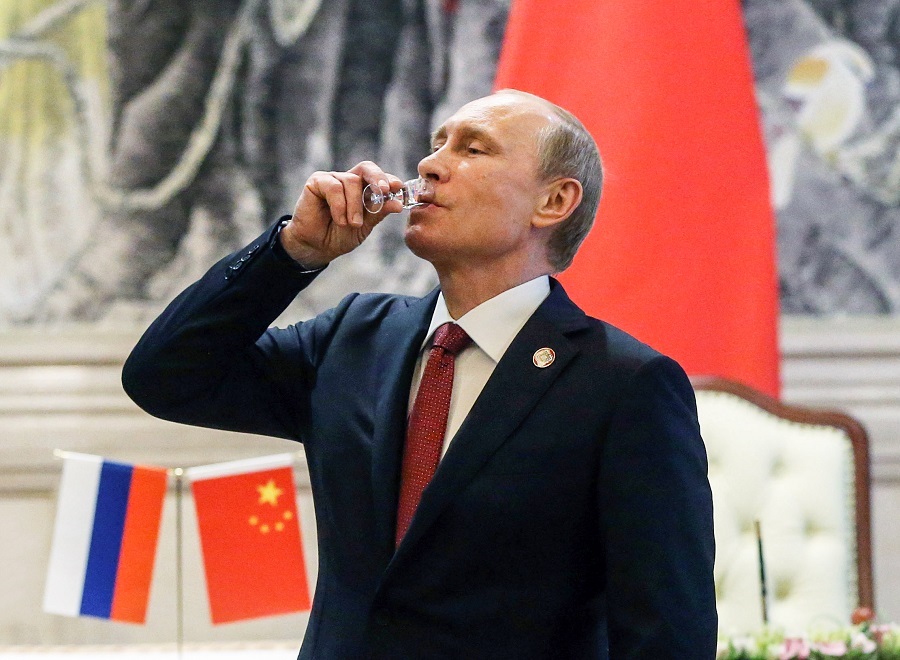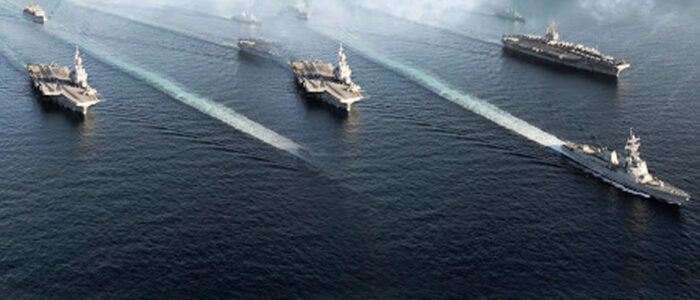Taiwanese Foreign Minister Joseph Wu is convinced that China is preparing for war, and preparing as best it can. He clearly stated it himself immediately after three days of large-scale maneuvers held around the island by the Chinese armed forces.
The alarm experienced by Taiwan has been maximum due to the incursions of Beijing’s fighter bombers.
35 military aircraft and eight Chinese warships were sent around the island and held until April 24th, with 14 aircraft crossing the median line of the Taiwan Strait for the first time.
Xi Jinping, in the report given on the Chinese state network “CCTV”, asked his armed forces to “strengthen training as if it were real combat”.
But apart from the military level, China’s pressure on the island, considered an “inalienable” part of its territory to reunify even by force if necessary, continues at different levels.
The already affirmed principle of the People’s Republic of China since its founding is that “there is only one China and Taiwan is part of it”.
In 1949, when Mao Zedong won the civil war and proclaimed the People’s Republic of China, Washington sided with Chiang Kai-shek, who had settled in Taiwan with the remnants of his army and government.
But after Nixon’s 1972 visit to China, the ice between the two countries melted. The US recognized the People’s Republic in 1979, and America accepted the basic principle of “one China”, with some exceptions: reunification into one China would only be acceptable if peaceful and consensual.
Nixon’s trip across the Wall allowed the two countries to begin normalizing their relationship and paved the way for the economic development of the People’s Republic.
But now if it is clear that Beijing does not intend to wait forever for the promised reunification, the question that arises is whether Xi Jinping is threatening war because he is really going to take the big step or is there another reason behind this move.
The first thing that comes to mind is an internal and selfish reason. China is in an economic crisis and the Party secretary is trying to distract Chinese people worried about the future with a nationalistic diversion.
So Xi pushing forward nationalism increases the tension and wants to become the dominant superpower in Asia and take the position that “belongs” in the order of global superpowers.
And apparently there is no shortage of opportunities to realize his ambitions. The option of war in this case would seem open.
On the other hand, Joe Biden has pledged to defend Taiwan in the event of an invasion. A law of Congress in Washington, the Taiwan Relations Act of 1979, obliges US presidents to provide Taiwan with the means to defend itself against possible aggression (even if Beijing were to call it a reunification operation).
That law does not say whether the US will have to send its soldiers to die to save Taiwanese democracy (recognized as a state by only 14 governments in the world).
But that law is aimed at preserving the status quo (the status quo that Biden has not hesitated to remember has been working so far), avoiding a war or even a “simple” military clash, to prevent a political force in Taipei to dream of declaring formal independence by “forcing” China to finally move.
So, meanwhile, the US defense industry is preparing for its first trip to Taipei since 2019 with the landing in early May of about 25 military contractors.
The goal is the joint production of drones (air, ground and submarine) and munitions, useful in deterring a Chinese invasion. For this reason, Biden is also asking some European countries to supply the island with weapons. Sweden is among the first among the candidates, with its Excalibur precision artillery systems, developed by the US giant Raytheon Missiles & Defense and its Swedish partner BAE Systems Bofors.
US intelligence believes that time is running out and that President Xi Jinping has ordered the military to be ready for an invasion in 2027, the year when his third term expires and coincides with the 100th anniversary of the People’s Liberation Army.
What are the options?
The option of war is open and is a scenario before everyone’s eyes. Xi uses every high-level meeting between American and Taiwanese leaders for military maneuvers that closely resemble an invasion simulation.
On the one hand, there are several factors that could lead to a military confrontation: the age of Xi himself, who would no doubt like to be remembered as the leader who brought Taiwan back under Beijing’s full authority; Beijing’s perception of the “decadence” of American domestic society and economy, and after Macron’s recent visit to China and his exit, Xi Jinping sees the Western split on the Taiwan file as a point in his favor.
But on the other hand, the factors that prevent this confrontation are other: the risk of a very strong American reaction in the event of an armed attack and the risk of a destructive escalation; the economic consequences for Beijing and the “Lecture” of Putin’s failure in Ukraine.
It should not be forgotten that Taiwan is an island. To mount major landing operations on an island (such as Okinawa or Iwo Jims during World War II) you would need to have control of the skies and seas. Doubts are strong that the People’s Republic of China would be convinced to achieve this.
So one option for Beijing may be a prolonged air-sea blockade, with consequent economic strangulation, aimed at surrendering Taiwan without creating a casus belli for US military intervention. So Xi may consider alternating threats with diplomatic moves.
The Chinese leader just received former Taiwanese president Ma Ying-jeou. It was the first visit in history by a former Taiwanese leader to China.
Ma Ying-Jeou belongs to the Nationalist Kuomintang (KMT) party, which today is pro-Chinese. One of his ideas is to create a common market that unites the island with the People’s Republic starting with the economy.
If in the 2024 elections Xi succeeds in favoring the defeat of the Democrats with the consequent return to power of the KMT, the war could be useless.
With this stone, XI would hit two birds: on the one hand, by avoiding war, it would accredit itself as a peace-loving superpower, which it is trying to do recently in the international scenario. And on the other hand, under the Hong Kong style, it would end Taiwanese democracy.
Biden condemned Xi’s recent showdown against Taiwan, but in measured tones. Undoubtedly, this is not the right moment to open a new war front.
On the other hand, some of the American generals, considering the evolution of the balance of forces in Asia, doubt that a war in defense of Taiwan can be won at present.
But in any case there is no doubt that Taiwan is absolutely strategic to the United States.
If the democratic island fell, American credibility in the Pacific would suffer humiliation and its entire alliance system in Asia would collapse.
Neither South Korea nor Japan would feel safe under an American protective umbrella weakened by the Chinese in Taiwan.
CIA chief William Burns, referring to the scenario presented by the XI to be realistically prepared for war, while speaking at a recent lecture at Rice University in Houston, emphasized, however, that “being ready does not mean that the XI has make the decision to necessarily go to war in 2027 or 2028 or 2026” given the variables on the ground.
Burns acknowledged, however, that “the risks of a potential conflict are likely to increase,” adding that he hopes to restore communications between the military from Washington and Beijing.
There is no doubt that Xi will be confirmed for another five years, but sooner or later the Taiwan issue will end, like a bill of exchange.
It will take great capacity for dialogue and understanding between the United States and China to avoid a confrontation.
Nixon and “the week that changed the world”
After 22 years of almost non-existent diplomatic relations between the United States and the People’s Republic of China, separated by opposing ideologies, the Vietnam War, the Taiwan and Korean issues, on February 21, 1972, Richard Nixon’s Air Force One landed in Beijing airport.
It was the first time in history that a sitting US president visited China.
Much of the credit for Nixon’s historic trip to China goes to Henry Kissinger, national security adviser, who organized everything down to the smallest detail.
He himself would test the waters by carrying out, in July 1971, the legendary Marco Polo operation.
Kissinger in the summer of 1971 was engaged in an Asian tour of Saigon, Bangkok, New Delhi and Islamabad.
China would not be in his stations, although in the greatest secrecy he would visit with a lightning arrangement.
Henry Kissinger was in Pakistan, inside the presidential palace at the reception hosted by Pakistani President Yahya Khan.
During that dinner, the American guest became ill, perhaps from the exotic food, fatigue or stifling heat.
Local authorities immediately took measures to transport Kissinger to a villa located at an altitude of 2,400 meters, but the car that was supposed to transfer him to the new residence remained empty.
Nobody noticed anything.
Kissinger, in reality, was not ill at all. Instead, along with his deputy, Winston Lord, two secret agents and an aide, he was taken in great secrecy to a military airport where four Chinese diplomats were waiting for him.
Disguised so as not to be recognized, he boarded a plane bound for Beijing. Within 48 hours, he attended six intensive meetings with Chinese Premier Zhou Enlai.
Two days later, on July 11, Kissinger reappeared at the Pakistani villa claiming to have recovered.
No one noticed his absence. And without waiting to return to the USA, Kissinger telegraphed President Nixon an emblematic word: “Eureka”.
Nixon’s visit to China was finally arranged, and that trip would be one of the biggest turning points in Cold War history.
To organize Operation “Marco Polo”, as it was called, it took an intensive diplomatic activity that lasted about three years.
Nixon’s goal was to meet Mao Zedong. To welcome the president of the United States in 1972 in Beijing were the top leaders of the Chinese Communist Party led by Premier Zhou Enlai.
Nixon’s trip to China was unprecedented in a world divided into two blocs where not a single photo penetrated the Western public.
But not only that, the visit was being made by one of the most conservative, right-wing and anti-communist American presidents.
The fact that he visited China, the epicenter of communism along with the Soviet Union, and that he met with Mao, made him a skilled and pragmatic politician in the eyes of the whole world.
Nixon’s trip to China lasted seven days, from February 21 to 28, 1972, and touched three cities: Beijing, Hangzhou, and Shanghai, with a stop in the shadow of the Great Wall.
While Nixon met with politicians and diplomats, his wife visited factories, schools and hospitals.
But the most interesting part of the trip was his face-to-face meeting with Mao Zedong. The dialogue, in which Kissinger and Lord also participated, lasted about an hour.
If there was only one meeting with Mao, Chinese Premier Zhou Enlai attended various meetings.
These meetings gave birth to the Shanghai Communique, signed by Nixon in the Chinese city of the same name.
For Zhou Enlai, Taiwan was the crux, and he would immediately go to that point as Kissinger recalls. “For you, that island has little strategic value, for China it is an open wound, if we do not solve the issue immediately, it will be useless to move forward in the talks”, he declared at that meeting.
Kissinger would maintain some kind of ambiguity in the response by asking for time towards the solution contemplated by China.
The memorandum was the first text published jointly by the two governments, Chinese and American, and the first step in diplomatic normalization between the United States and China.
In the end, the US agreed to recognize the People’s Republic of China as the sole legitimate government of China, entrusting Taiwan with its fate “in a time horizon compatible with the domestic needs of the United States”.
The communiqué included, among other things, the recognition by the USA of the “One China” principle, i.e. the existence of a single Chinese state, with Taiwan an integral part of the People’s Republic.
On the other hand, neither country should seek hegemony in the Pacific, undertaking to oppose the possible expansion in the area of a third power eager to dominate the region.
And finally the document envisioned the gradual normalization of economic and trade relations between the United States and China.
Therefore, the Shanghai Communiqué can be considered a key step in Sino-American diplomatic fusion and is still a theoretically valid document today.
Nixon’s trip to Beijing helped widen the rift between the Soviet Union and China, prompting Moscow to reconsider its ambitions on the Asian continent.
China began its transformation by first opening up to the Western economy and then implementing unprecedented economic reforms.
Shortly thereafter, the People’s Republic of China opened its doors to foreign investment, beginning the construction of so-called socialism with Chinese characteristics that continues today.
Kissinger, very satisfied with the result, would celebrate his strategic masterpiece by underlining that “Diplomacy should not be sentimental, but predictable”.
And he did not fail to point out the fact that “Beijing has proven to be extremely flexible in the implementation of the principle that there is only ‘One China’, American presidents have skillfully followed a balanced position, approaching the People’s Republic of China and maintaining the conditions for the development of democracy in Taipei”.
Just a few weeks ago, in the face of rising tension between the US and China, Kissinger warned that “Taiwan cannot be the center of relations, the US must not achieve some kind of solution either through maneuvers or through a gradual process of the ‘two Chinas’, but China must continue to exercise its patience as it has exercised so far”.If it is clear that in any case Beijing has no intention of waiting forever for the promised reunification, the only question is, are we facing a new war? In the face of the new strategic confusion between the two countries, and the pros and cons on both sides, the answer is that we are probably not on the verge of a war, not yet, so far at least.








